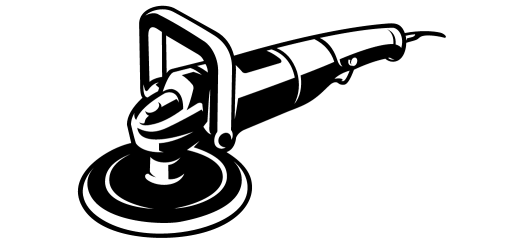Maintaining the appearance of your vehicle requires careful consideration of the products you use during the waxing process. While both liquid wax and paste wax are popular choices for power waxing, there are notable differences between the two that can influence your decision. Understanding these distinctions will help you make an informed choice and achieve the desired results for your car’s finish.
Liquid Wax:
Ease of Application: Liquid wax is known for its user-friendly application process. It flows smoothly and evenly across the vehicle’s surface, making it easier to apply compared to paste wax. This ease of use reduces the physical effort required during the waxing process.
Low Resistance: Due to its liquid form, this type of wax creates minimal resistance as it glides across the clear coat of your car. This characteristic helps prevent accidental swirl marks and scratches during application.
Consistency Concerns: While liquid wax is generally easy to apply, it can be inconsistent if not applied generously and consistently. To achieve optimal results, it’s important to ensure uniform coverage.
Solvent Content: Liquid wax formulations often contain more solvents and fewer waxes compared to paste wax. While this can make it easier to apply, it may also result in a slightly shorter-lasting protective layer.
Paste Wax:
Exceptional Shine: Paste wax is renowned for the exceptional shine it produces. Its thicker consistency allows it to create a deep, glossy finish that enhances the overall appearance of your car.
Natural Oils: Paste wax typically contains natural oils that aid in the formation of a protective shell on your car’s paint. This shell intensifies the luster of the paint, giving it a showroom-worthy finish.
Higher Wax Content: In contrast to liquid wax, paste wax formulations contain more wax and fewer solvents. This high wax content contributes to a longer-lasting protective layer, which is especially beneficial in harsh weather conditions.
Application Effort: Applying paste wax requires more physical effort to spread it evenly across the vehicle’s finish and buff it to a high shine. However, the results are often worth the extra work.
Effective Cleaning: Paste wax can be more effective in removing old paint and embedded dirt from the car’s surface, making it an excellent choice for thorough detailing.
Which Type Of Wax Is Easier To Apply For Power Waxing
Liquid wax is generally easier to apply for power waxing than paste wax. Liquid wax can be applied using a microfiber cloth, foam applicator pad, or a car buffer Without question, no matter the brand, liquid waxes are easy to apply and require less elbow grease to buff away the white residue. Because of their consistency, liquids create less resistance as they flow across the clear coat on your car.
On the other hand, thicker, stickier pastes require more work to spread across your finish and buff to a shine. These differences in consistency can also affect the results of your detailing work. If you choose a liquid wax, be especially careful to apply a generous and consistent amount of wax to the surface of your car. If you don’t, it can be easy to apply too little wax in some areas as you work across each panel of your car. Therefore, if you want an easier application process, liquid wax is the better choice for power waxing.
Conclusion,
The choice between liquid wax and paste wax for power waxing ultimately depends on personal preference and the specific needs of your car. If you prioritize ease of application and a quicker process, liquid wax may be your preferred option. On the other hand, if you seek an exceptional shine, longer-lasting protection, and are willing to put in a bit more elbow grease, paste wax is likely the better choice. Whichever you choose, regular waxing is essential to preserve your vehicle’s appearance and protect it from environmental damage.
